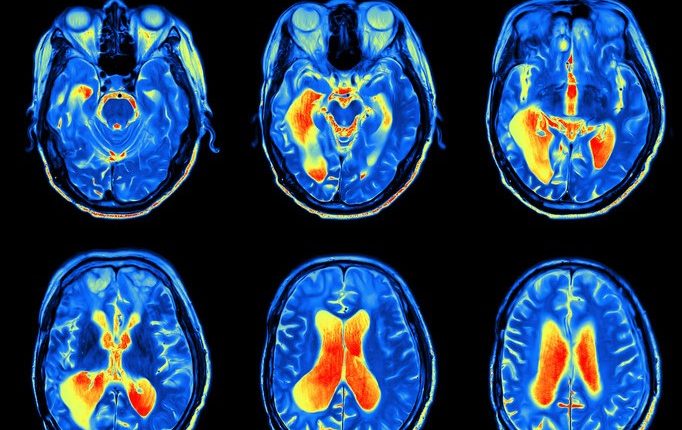
Pediatric malignancies: medulloblastoma
Medulloblastoma is a pediatric malignant tumor involving the central nervous system. It is one of the most curable through chemotherapy, radiation therapy, and surgery
Medulloblastoma is the most common malignant tumor of the central nervous system in children
It arises in a region called the posterior cranial fossa, a region where the cerebellum is also located.
The symptoms with which it initially manifests may be related to compression by the tumor of structures in the posterior cranial fossa of the brain or related to blockage of CSF circulation and thus hydrocephalus caused by this blockage.
The most common symptoms are headaches, vomiting, progressive instability in walking, the appearance of strabismus, and the appearance of head deviation.
Diagnosis is made by instrumental examinations (Computed Tomography and later Magnetic Resonance Imaging).
Given the possibility that there is disseminated disease to other regions of the central nervous system, it is always essential to obtain images of both the brain and spinal cord.
A CSF sampling by lumbar puncture can rule out the presence of neoplastic cells at this level.
Confirmation on histologic examination is obtained after surgery to remove the lesion.
There are several forms of medulloblastoma that are distinguishable on histologic examination and allow prediction of the aggressiveness of the tumor
They are distinguished:
- Classic form: gelatinous tissue, very rich in blood vessels;
- Desmoplastic: more compact tissue;
- Extensive nodularity: better prognosis, may be associated with genetic syndromes (Gorlin syndrome);
- Large cell anaplasty: more aggressive disease, characterized by many cellular changes.
Treatment of medulloblastoma is based on three basic pillars: surgery, chemotherapy, radiation therapy
Preliminary surgery is often necessary to resolve the hydrocephalus, before proceeding to tumor removal.
Removal of the neoplasm is done through surgery that involves cutting into the posterior portion of the head and the highest part of the neck.
The use of modern neurosurgical techniques (neuronavigator, microscope, neurophysiologic monitoring) allows for maximum removal while minimizing the risks of neurological damage.
The ideal surgical excision is to remove the tumor completely; however, there are situations in which diseased tissue infiltrates the brainstem (a very deep and delicate vital nerve structure) so it is preferred to preserve nerve function while leaving small residual tumor portions that will be affected by subsequent therapies.
CHILD HEALTH: LEARN MORE ABOUT MEDICHILD BY VISITING THE BOOTH IN EMERGENCY EXPO
Once the diagnosis is confirmed, the most appropriate therapy will be chosen in accordance with international treatment protocols
Chemo-radiotherapy treatment is chosen on the basis of the child’s age and the aggressiveness of the disease (more intensive therapies to allow the more aggressive forms to be cured).
Chemotherapy is administered venously, usually through the use of a central venous catheter that avoids frequent venous punctures.
The drugs used may vary according to the specific indications of the protocols.
Radiation therapy is performed over the entire brain and spinal cord, but directing a higher dose of radiation to the sites where the tumor was located at the time of diagnosis and a lower dose to the remaining parts of the brain and spinal cord.
This type of treatment is intended to reduce the possibility of small cellular remnants allowing the disease to relapse in the future.
Medulloblastoma is among the most curable malignancies with currently available therapies
Along with histologic classification, there is the possibility of recognizing subgroups based on the molecular defects that cause tumor cell proliferation.
In particular, 4 subgroups are distinguished (WNT, SHH, group 3 and group 4) with different frequency and response to treatment.
There are also molecular defects (MYC gene activation) that provide further insight into the aggressiveness of the disease.
Currently, research is aimed at finding disease markers to further reduce the intensity of treatment when this does not change the prospect of cure and to identify specific molecular defects against which to develop smart drugs.
Medulloblastoma is an aggressive neoplasm, although today it can be cured in more than 70% of cases
Equally aggressive therapies are needed to achieve these chances of cure.
The impact of these therapies on the quality of life of a child, youth, or adult cured of medulloblastoma can be considerable.
Therefore, it is necessary to expand the knowledge of this disease and to refer to highly qualified Centers that can choose, based on the clinical, histological and molecular features of the disease the right treatment to eradicate it but at the same time to ensure a good quality of life in the future.
Read Also
Emergency Live Even More…Live: Download The New Free App Of Your Newspaper For IOS And Android
Brain Tumours: Symptoms, Classification, Diagnosis And Treatment
Pediatric Brain Tumors: Types, Causes, Diagnosis And Treatment
Brain Tumours: CAR-T Offers New Hope For Treating Inoperable Gliomas
Lymphoma: 10 Alarm Bells Not To Be Underestimated
Chemotherapy: What It Is And When It Is Performed
CAR-T: An Innovative Therapy For Lymphomas
What Is CAR-T And How Does CAR-T Work?
Radiotherapy: What It Is Used For And What The Effects Are
Craniosynostosis Surgery: Overview



